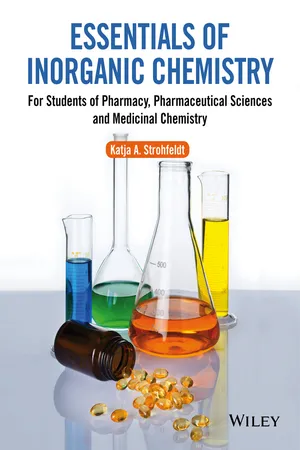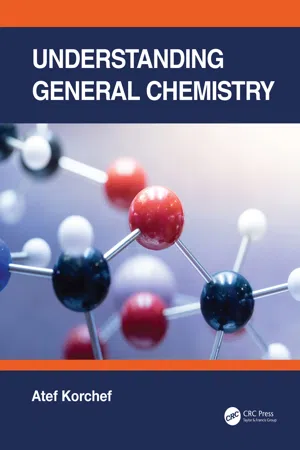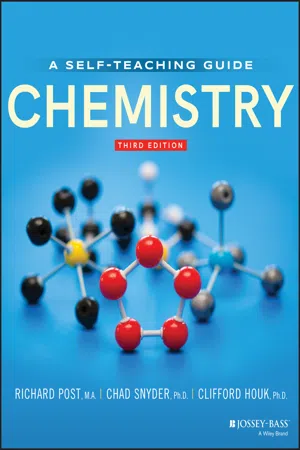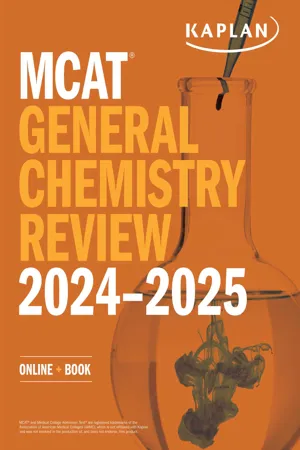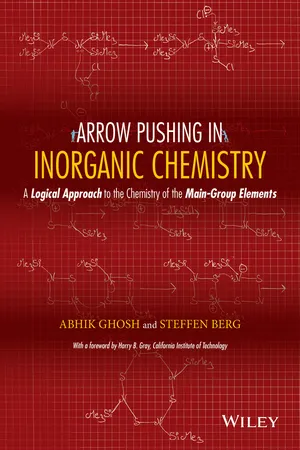Chemistry
Group 3A
Group 3A refers to the elements in Group 13 of the periodic table, including boron, aluminum, gallium, indium, and thallium. These elements share similar chemical properties, such as having three valence electrons. They are often used in various industrial applications, such as aluminum in construction and packaging, and boron in the production of glass and ceramics.
Written by Perlego with AI-assistance
Related key terms
Related key terms
1 of 4
Related key terms
1 of 3
8 Key excerpts on "Group 3A"
- eBook - ePub
Essentials of Inorganic Chemistry
For Students of Pharmacy, Pharmaceutical Sciences and Medicinal Chemistry
- Katja A. Strohfeldt(Author)
- 2015(Publication Date)
- Wiley(Publisher)
Chapter 4 The Boron Group – Group 13Group 13 (13th vertical column of the periodic table) is called theboron groupand it consists of boron (B), aluminium (Al), gallium (Ga), indium (In) and thallium (Tl) (Figure 4.1 ).The periodic table of elements, group 13 elements are highlightedFigure 4.1All elements within group 13 show a wide variety of properties. It is important to note that boron is a metalloid (semi-metal) whereas aluminium is a metal but shows many chemical similarities to boron. Aluminium, gallium, indium and thallium are considered to be metals of the ‘poor metals’ group.Metalloids are elements that display some properties characteristic for metals and some characteristic for nonmetals.In this chapter, the general chemistry of group 13 elements is discussed as well as some clinical applications for boron and aluminium. Further clinical applications for boron as well as applications for thallium can be found in the chapter on radiochemistry (Chapter 10).4.1 General chemistry of group 13 elements
Group 13 elements are characterised by having three electrons in their valence shell. Therefore, all elements form the stable cation M3+ . Most elements (with the exception of B) form additionally the singly positively charged ion M+ , which is indeed the more stable oxidation state for Tl.Boron and aluminium occur only with oxidation number +3 in their compounds, and with a few exceptions their compounds are best described as ionic. The electronic configuration shows three electrons outside a noble gas configuration, two in an s shell and one in a p shell. The outermost p electron is easy to remove as it is furthest from the nucleus and well shielded from the effective nuclear charge. The next two s electrons are also relatively easy to remove. Removal of any further electrons disturbs a filled quantum shell and is therefore difficult. This is reflected in the ionisation energies (Table 4.1 - eBook - ePub
- Atef Korchef(Author)
- 2022(Publication Date)
- CRC Press(Publisher)
1 The valence shell is 3s3p. Al is situated in period 3. The number of valence electrons is three. There are ten groups of block d. Therefore, Cl is situated in the group (3+10=) 13. Note that there is one electron in sublevel p, therefore Al is situated in Group 1 of block p (which is the same as group 13 of the periodic table).Elements in the periodic table of elements can be divided into three main categories: metals, non-metals and metalloids. Most elements are metals. Metalloids have properties of both metals and nonmetals. Non-metals include halogens and noble gases.Metals can be divided into alkali metals, alkaline earth metals, transition metals, lanthanides and actinides.- Alkali metals: (ns1 ). The alkali family (i.e., Li, Na and K) is found in Group 1 of the periodic table of elements.
- Alkaline earth metals: (ns2 ). They are found in Group 2 of the periodic table (i.e., B, Mg and Ca).
- Transition metals are elements where the atoms have an incomplete d subshell, or which can give rise to cations with an incomplete d subshell. Transition metals (i.e., Fe, Cu and Ni) are found from Group 3 to Group 12 in the periodic table of elements.
- Halogens (ns2 np5 ) are found in Group 17. Halogens are F, Cl, Br, I, At and Ts. Halogens are very reactive elements.
- Noble gases: (ns2 np6 ) are found in the last group of the periodic table of elements (group 18). Their valence shell is completely filled. They include He, Ne, Ar, Kr, Xe and Ra.
- Lanthanides
- Albert S. Tarendash(Author)
- 2021(Publication Date)
- Barrons Educational Services(Publisher)
Elements within a group share similar properties, and this likeness is directly related to the similarities in the electron configurations of their valence levels. For this reason, we also call a group a chemical family. For example, the elements in Group 13 constitute a chemical family: Atoms of Group 13 elements each have three valence electrons. Consequently, the properties of the elements in this group are similar to one another. (We note, however, that the word similar does not mean “identical”!) 9.4 PROPERTIES ASSOCIATED WITH PERIODICITY Before we describe periodic properties in detail, we need to discuss a number of important factors associated with periodicity. Metallic Character Approximately two-thirds of the elements in the Periodic Table are metals. Metallic elements have certain unique properties: Luster, the mirrorlike shine that reflects light well. Conductivity, the ability to transfer heat and electrons well. Malleability, the ability to be rolled or hammered into thin sheets. Ductility, the ability to be drawn into wire. Examples of metals are sodium (Na), iron (Fe), and mercury (Hg, a liquid at room temperature). In contrast, nonmetals tend to be brittle (in the solid phase), to lack luster, and to have poor conductivities. Examples of nonmetals include sulfur (S), helium (He), and bromine (Br 2, a liquid at room temperature). The bold zigzag line in the Periodic Table separates the metallic elements from the nonmetallic elements. We will refer to it as the metal-nonmetal line. A number of elements, such as boron (B), silicon (Si), germanium (Ge), arsenic (As), antimony (Sb), and tellerium (Te), have properties somewhat between those of metals and those of nonmetals- eBook - ePub
- Monica Halka, Brian Nordstrom(Authors)
- 2019(Publication Date)
- Facts On File(Publisher)
The chemical properties of the post-transition metals are aligned closely with the group numbers of the columns in which they are found. Aluminum, gallium, indium, and thallium are in group IIIA, which means, in general, that the chemistry of their "+3" ions tends to be dominant. The exception is thallium, for which the chemistry of the "+1" ion is more important. Tin and lead are in group IVA. Although their chemistry tends to be dominated by the "+2" ion in each case, the chemistry of tin and lead in their "+4" oxidation states is also very important. Bismuth is in group VA. The chemistry of its "+3" ion is more important, but bismuth does exist in compounds in the "+5" oxidation state.Tin and lead have been important metals since the earliest times of human history. Bismuth was known during the Middle Ages. Otherwise, the discoveries and applications of the remaining post-transition metals tend to have occurred relatively recently in history. The group IIIA metals were discovered during the 19th century. Because they tend to be very difficult to extract from their ores, applications for them were only found during the 20th century. As an example of a group IIIA metal, aluminum definitely is the one that has found the most applications in modern industry. Therefore, the discussion of the post-transition metals will begin with aluminum—a very lightweight, corrosion resistant, and versatile element.Entry Author: Halka, Monica, and Brian Nordstrom.Passage contains an image
Aluminum
Aluminum (called "aluminium" in Britain and some of its former colonies)—element 13 in the periodic table—is a silvery metal with a density of 2.70 g/cm3 . It has only one isotope on Earth— . Aluminum is found as a silicate material (that is, in combination with silicon and oxygen) in almost all rocks and is the third most abundant element—and the most abundant metal—on Earth. Bauxite (mostly Al2 O3 ) is the most important ore of aluminum. Another important ore is corundum, which also is a form of Al2 O3 - eBook - ePub
Chemistry
With Inorganic Qualitative Analysis
- Therald Moeller(Author)
- 2012(Publication Date)
- Academic Press(Publisher)
3+ . In its general chemical properties, boron resembles its diagonal neighbor silicon more than it resembles the other Group III elements. The remaining members of the group are metals and their compounds can be either ionic or covalent. The elements all form hydrates in aqueous solution.Down Representative Groups III–V: lower oxidation states become more stableGroup IVC Si Ge Sn PbGallium, indium, and thallium can each have a + 1 oxidation state. However, compounds in the + 1 state are more numerous and more stable for indium and thallium than for gallium. This illustrates a general trend among the metals and semiconducting elements of Representative Groups III, IV, and V toward greater stability for lower oxidation states of the elements further down the groups.10.14 Representative Group IV
In Representative Group IV carbon is a nonmetal, silicon and germanium are semiconducting elements, and tin and lead are metals. Atoms of these elements have ns 2 np 2 configurations in their valence shells.All of the members of this group exhibit an oxidation state of + 4, for example, in their compounds with the halogens and oxygen (EX4 and EO2 , where E is a Group IV element), and a state of -4 in the hydrides (EH4 ). There are substantial differences in the chemistry of the compounds of these elements. For the halides and hydrides, the one common factor is the tetrahedral molecular geometry, which is predicted by the electron-pair repulsion theory (Section 9.26 ). The general chemical stability of the halides and hydrides of this family is greatest for carbon and decreases from silicon to lead. For example, methane, CH4 , is not decomposed into its constituent elements below about 800°C, but the corresponding compounds of the other elements of this group decompose at much lower temperatures (decomposition temperatures: SiH4 , 450°C; GeH4 , 285°C; SnH4 , 150°C; PbH4 , about 0°C).The +2 oxidation state becomes increasingly stable down the carbon family. Carbon monoxide is the only stable compound of carbon in the +2 state. For silicon, the +2 state has been best characterized for the gases SiO and SiF2 , which can be obtained at high temperatures. The relatively few known compounds of dipositive germanium are potent reducing agents, the germanium being readily oxidized to the +4 state. The +2 oxidation state is most important in the chemistry of tin and lead, the metallic members of the family. These are the only members of the family that can form typical salts containing +2 ions. Such ions have the 18 + 2 configuration and result from the loss of the p - eBook - ePub
Chemistry
Concepts and Problems, A Self-Teaching Guide
- Richard Post, Chad Snyder, Clifford C. Houk(Authors)
- 2020(Publication Date)
- Jossey-Bass(Publisher)
Nitrogen (N), a Group VA element, has ________ electrons in its outermost shell. Aluminum (Al), a Group IIIA element, has ____ electrons in its outermost shell.Answer: five; threeThe outer shell electrons are also known as valence electrons. The periodic table on the next page includes all of the symbols for the first 20 elements. The numbers of valence electrons are listed for lithium (Li), carbon (C), and argon (Ar). Fill in the number of valence electrons for each remaining element in this periodic table.Remember that helium (He) is an exception in Group VIIIA, since it only has a total of two electrons in its entire atom, both of which are valence electrons.Answer:The outer shell or valence electrons are especially important because those electrons are involved when atoms unite chemically to form compounds.When an atom of magnesium unites with another different atom to form a compound, what electrons of the magnesium atom are primarily involved?Answer: the two valence or outer shell electronsELECTRON DOT SYMBOLS (LEWIS SYMBOLS)
The outer shell or valence electrons may also be represented by a series of dots. Beryllium, with two valence electrons, can be represented as Be: (each dot represents one valence electron).represents a chlorine atom with how many valence electrons? ____Answer: sevenThe first 20 elements and their electron dot symbols are as follows.Note that some books represent boron as , aluminum as , carbon as , and silicon as . Such a representation is used to simplify the explanation of how many bonds a given element may have or may form with other elements, but it does not agree with the quantum mechanical concept of the atom (Chapter 1 ).We will discuss the number of bonds an element has in a compound in Chapter 14 - No longer available |Learn more
MCAT General Chemistry Review 2024-2025
Online + Book
- (Author)
- 2023(Publication Date)
- Kaplan Test Prep(Publisher)
10 ). In the modern IUPAC identification system, the groups are numbered 1 to 18 and are not subdivided into Group A and Group B elements.MCAT CONCEPT CHECK 2.1:
Before you move on, assess your understanding of the material with these questions.- Mendeleev’s table was arranged by atomic weight, but the modern periodic table is arranged by: _______________________________________
-
Which of the following are representative elements (A), and which are nonrepresentative (B)?
ElementA or BElementA or BElementA or BElementA or B
Ag Al K P Pb Li Pu U Cu Cf Zn B N Np O He
2.2 Types of Elements
LEARNING OBJECTIVES
After Chapter 2.2, you will be able to:- Classify elements as metal, nonmetal, or metalloid
- Predict the traits of an element given its location on a periodic table:
When we consider the trends of chemical reactivity and physical properties together, we can begin to identify groups of elements with similar characteristics. These larger collections are divided into three categories: metals, nonmetals, and metalloids (also called semimetals).Metals
Metals are found on the left side and in the middle of the periodic table. They include the active metals, the transition metals, and the lanthanide and actinide series of elements. Metals are lustrous (shiny) solids, except for mercury, which is a liquid under standard conditions. They generally have high melting points and densities, but there are exceptions, such as lithium, which has a density about half that of water. Metals have the ability to be deformed without breaking; the ability of metal to be hammered into shapes is called malleability, and its ability to be pulled or drawn into wires is called ductility. At the atomic level, a metal is defined by a low effective nuclear charge, low electronegativity (high electropositivity - eBook - ePub
Arrow Pushing in Inorganic Chemistry
A Logical Approach to the Chemistry of the Main-Group Elements
- Abhik Ghosh, Steffen Berg(Authors)
- 2014(Publication Date)
- Wiley(Publisher)
Chapter 3Group 13 Elements
Why did I decide to undertake my doctorate research in the exoticfield of boron hydrides? As it happened, my girlfriend, SarahBaylen, soon to become my wife, presented me with a graduationgift, Alfred Stock's book,The Hydrides of Boron and Silicon. Iread this book and became interested in the subject. How did ithappen that she selected this particular book? This was the timeof the Depression. None of us had much money. It appears sheselected as her gift the most economical chemistry book ($2.06)available in the University of Chicago bookstore. Such are thedevelopments that can shape a career.Herbert C. Brown.In “From Little Acorns Through to Tall Oaks:From Boranes Through Organoboranes,”Nobel Lecture, December 8, 1979.With these elements, we begin our introduction to the p block, home of all nonmetals (and of a few metals) and of classic covalent chemistry. The elements are chemically rather diverse: boron is a moderately electropositive nonmetal, whereas aluminum, gallium, indium, and thallium are all metals. The covalent chemistry we will encounter in this chapter, therefore, will still be somewhat limited, compared to what is to follow in the next chapters. Some general remarks are in order:- The elements are generally trivalent, although the monovalent state is also well esta- blished for all the elements except boron. For thallium, the monovalent state is the normal stable state, whereas for the lighter metals the monovalent state is reducing and accessible only with considerable care and difficulty.
Index pages curate the most relevant extracts from our library of academic textbooks. They’ve been created using an in-house natural language model (NLM), each adding context and meaning to key research topics.
Explore more topic indexes
Explore more topic indexes
1 of 6
Explore more topic indexes
1 of 4
